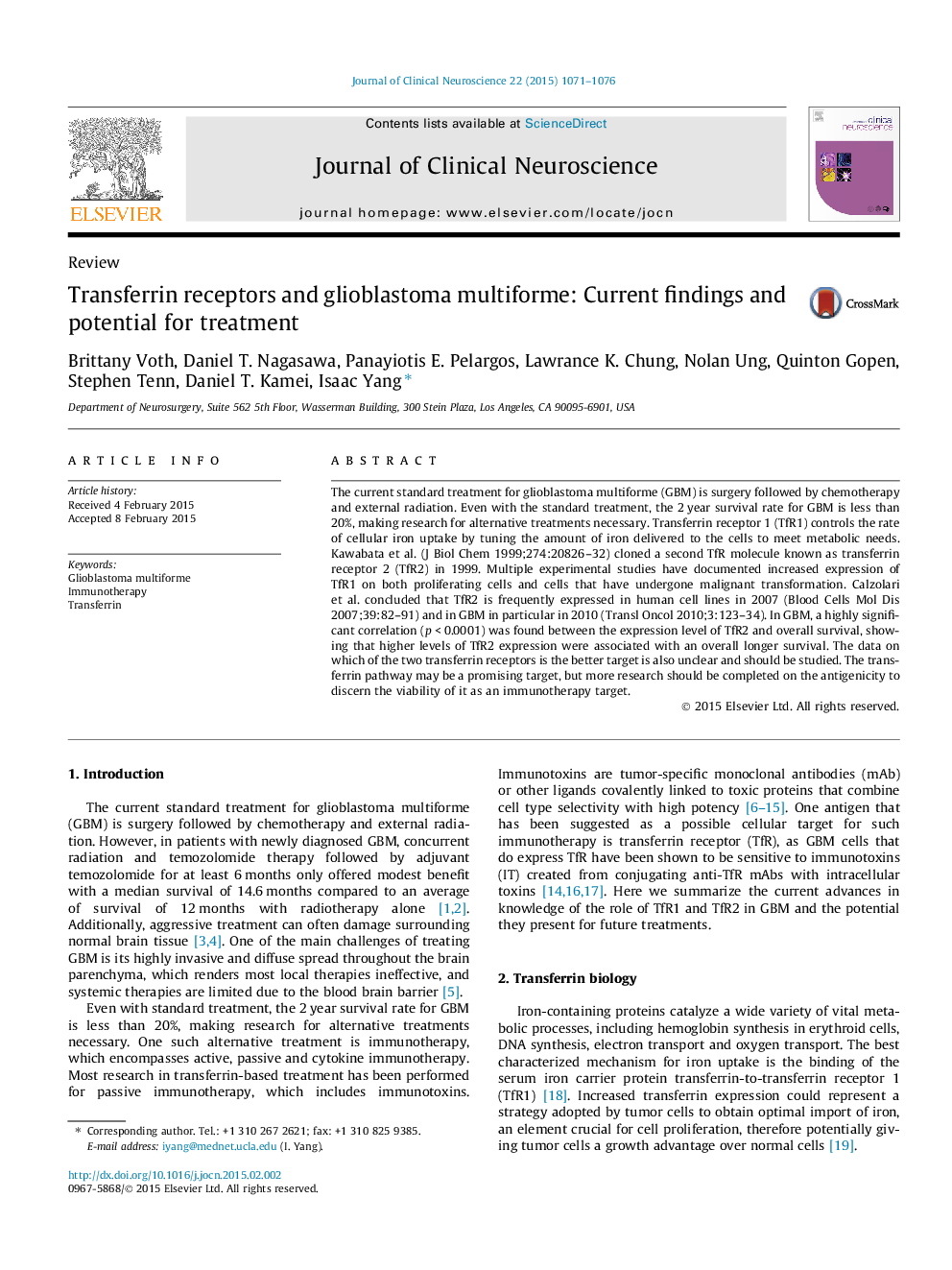| Article ID | Journal | Published Year | Pages | File Type |
|---|---|---|---|---|
| 3059011 | Journal of Clinical Neuroscience | 2015 | 6 Pages |
The current standard treatment for glioblastoma multiforme (GBM) is surgery followed by chemotherapy and external radiation. Even with the standard treatment, the 2 year survival rate for GBM is less than 20%, making research for alternative treatments necessary. Transferrin receptor 1 (TfR1) controls the rate of cellular iron uptake by tuning the amount of iron delivered to the cells to meet metabolic needs. Kawabata et al. (J Biol Chem 1999;274:20826–32) cloned a second TfR molecule known as transferrin receptor 2 (TfR2) in 1999. Multiple experimental studies have documented increased expression of TfR1 on both proliferating cells and cells that have undergone malignant transformation. Calzolari et al. concluded that TfR2 is frequently expressed in human cell lines in 2007 (Blood Cells Mol Dis 2007;39:82–91) and in GBM in particular in 2010 (Transl Oncol 2010;3:123–34). In GBM, a highly significant correlation (p < 0.0001) was found between the expression level of TfR2 and overall survival, showing that higher levels of TfR2 expression were associated with an overall longer survival. The data on which of the two transferrin receptors is the better target is also unclear and should be studied. The transferrin pathway may be a promising target, but more research should be completed on the antigenicity to discern the viability of it as an immunotherapy target.
